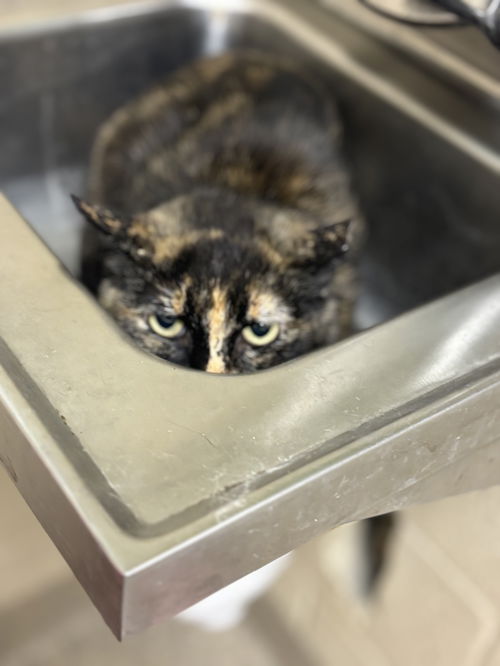Domestic Short Hair : : Adult : : Small
Barn cats benefit their caretakers! Supporting a barn cat is the safest way to control the rodent population in your barn. There are no poisons for children and pets to get into and no need to set nasty traps. They will help keep rodents away from grain and food storage areas, and you'll enjoy watching the cats as well as have the satisfaction of giving them a much-needed home! Consider adopting a barn cat. Due to the nature of the program, we may not have suitable cats available immediately, but will try to fill your request as soon as possible. We will maintain a waiting list, as the number of cats available as candidates for the Barn Cat Program will fluctuate. Filling out a questionnaire is the first step to adopting. Cats that are placed into our Barn Cat Program fall under three main categories:
We will not place cats who are best suited to be house pets as barn cats and we won't place kittens under age 4 months as barn cats, unless they are feral/semi-feral without hope of becoming socialized (this may be waived on a case by case basis). What You Will Need To Provide
What the Animal Care and Adoption Center Will Provide
Due to the nature of the program, we may not have suitable cats available immediately, but will try to fill your request as soon as possible. Because the number of cats available for the Barn Cat Program fluctuates, we will maintain a waiting list for potential adopters Filling out the application is your first step in the adoption process Why two cats? Alley Cat Allies recommends that at least two cats always be moved together. The move will be less traumatic and adjustment to their new home easier if they have the security of one or more companion. Why do they have to be confined for the first 2-3 weeks? Cats need to be confined initially in their new home for at least two to three weeks in order to familiarize the cats with their new environment, so that they will remain on the premises. Even though there are instances of cats remaining when they have escaped upon arrival, this is rare and most cats will take off, never to be seen again. Other than being dangerous for the cat, this can be traumatic for the caregiver who has usually put a lot of time, energy, money, and care into the cat. Some people see confinement as cruel, but a short confinement period is a very necessary part of the relocation project. Not confining the cats and having them run off could mean a far worse fate for the cats. You should know that during the first day or two, the cats may struggle to find a way out. Most cats settle down in the crate after a day or two when they realize that no harm will befall them. How are the cats confined? The adopter should be equipped with an extra-large dog crate or with a large exercise pen covered with mesh wire. We will provide a small, plastic crate that will be placed inside and to the back of the larger enclosure. This provides a hiding place for the cats. The cats needs to be provided with: a litter box, which needs to be scooped or cleaned daily; dry food and fresh water at all times; and a portion of canned food every day. It is recommended that a portion of the cage/crate be covered with a sheet. This will allow the cats to feel more protected and hidden. In winter, the small crate should be bedded with thick towels or straw. Additionally, the caregiver may wish to place bales of straw around the enclosure to help maintain warmth for the confined cats. During spells of freezing weather, the caretaker must be sure to give fresh water throughout the day as the cat’s water becomes frozen. There are various devices available to keep water from freezing. We can provide sites where these can be purchased. In summer, proper ventilation is vital to prevent overheating. Cats can and do become overheated. What happens after the confinement period? It’s best to close all doors and windows in the barn, open the crate door in the evening, then leave. The cats will want to explore their new surroundings all night, as they are nocturnal. By morning they will have found good hiding places, although they may prefer the security of their crate. You can ease the transition by continuing to place their food and water in the crate for a few days with the door open. You will need to continue providing daily food and water after the crate is removed. Cats are territorial creatures. They will usually maintain a home base once their scent has been established, a continuous food source is provided and they feel safe. DO NOT RELEASE IF IT IS RAINING or the POTENTIAL FOR RAIN Cats find their home by scent and rain will wash it away. Waiting one more day will not hurt. Leave the crates up for an additional five days, so the cats can get back in if they want. After the release, we hope they think of that barn as home and decide to stay. What if the cats don’t like their new home? They will like the regular food and water you provide (cats cannot live on mousing alone). They may even begin to show affection. The key to success will be your patience while they adapt to the sights, sounds and smells of their new surroundings. Continue to speak softly to them, try hand feeding treats and leave a radio on to help them get used to human talking and singing. |
Test
|
||||||






